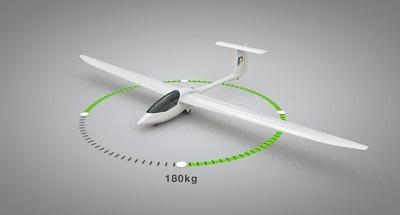Wed, Feb 18, 2015
There Have Been Various Types Of Self-Launched Gliders And ProAirsport Is Breaking Technological Ground With Hybrid Power
Glider flying rates high on the scale of sport flying. However, the nature of the beast is that it requires more than one person to get a glider launched into the air. To make launching a non-team effort, the answer has been a powered glider that can be self-launched and then stay aloft in powerless flight.

Now, a British company named ProAirsport is developing a self-launching system using hybrid electric and jet power. Their proposed aircraft falls into the British microlight certification standards, and how or if it will be certified for the U.S. market remains an open question.
For the most part, self-launched gliders have been propeller driven. Small jets have been used before but poor static thrust means take-off runs are impractically long and fuel consumption high. ProAirsport is seeking to take advantage of the jet engine and overcoming it shortfalls with electric powered wheels in a project they call “GloW.”

The small turbine engine is light weight with few moving parts and low vibration when compared to reciprocating engines. Turning the engine on (and off) is a simple automated procedure. A small air scoop is all that opens (and closes), the engine itself remains inside the fuselage, so in flight the turbine can be turned on and off easily with minimum effect on the glide performance. Their engine of choice is the AMT Titan producing max thrust of 88 pounds. According to ProAirsport, this engine is a tried and tested unit with a long in-service record.
An electric motor is used for ground taxiing and for added acceleration on takeoff. The high-torque brushless motor is a standard unit customized for their use profile and with a purpose built controller. The motor provides the initial pre take-off sprint, quickly accelerating the aircraft to flying speed. The short peak output for the sprint means required battery capacity is minimized reducing weight and cost.
Once again, recreational aviation is driving new technology. The website listed below provides an excellent video for more details.
(Images from ProAirsport’s website)
More News
Aero Linx: American Aviation Historical Society AAHS is dedicated to the preservation and dissemination of the rich heritage of American aviation. Our purpose is to collect, preser>[...]
CrewMember (UAS) A person assigned to perform an operational duty. A UAS crewmember includes the remote pilot in command, the person manipulating the controls, and visual observers>[...]
Immediately After The Right Main Tire Contacted The Runway Surface, The Right Main Landing Gear Failed On October 31, 2025, at about 1227 Pacific daylight time, a Maule M-7-235A, N>[...]
Also: IAE Acquires Diamond Trainers, Army Drones, FedEx Pilots Warning, DA62 MPP To Dresden Tech Uni The danger to the flight training industry and our future pilots is clear. Dona>[...]
"On December 3, 2025, at approximately 10:45 a.m., a Thunderbird pilot ejected safely from a F-16C Fighting Falcon aircraft during a training mission over controlled airspace in Ca>[...]
 ANN's Daily Aero-Linx (12.03.25)
ANN's Daily Aero-Linx (12.03.25) ANN's Daily Aero-Term (12.03.25): CrewMember (UAS)
ANN's Daily Aero-Term (12.03.25): CrewMember (UAS) NTSB Prelim: Maule M-7-235A
NTSB Prelim: Maule M-7-235A Airborne-Flight Training 12.04.25: Ldg Fee Danger, Av Mental Health, PC-7 MKX
Airborne-Flight Training 12.04.25: Ldg Fee Danger, Av Mental Health, PC-7 MKX Aero-News: Quote of the Day (12.04.25)
Aero-News: Quote of the Day (12.04.25)




